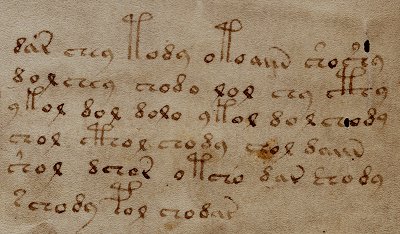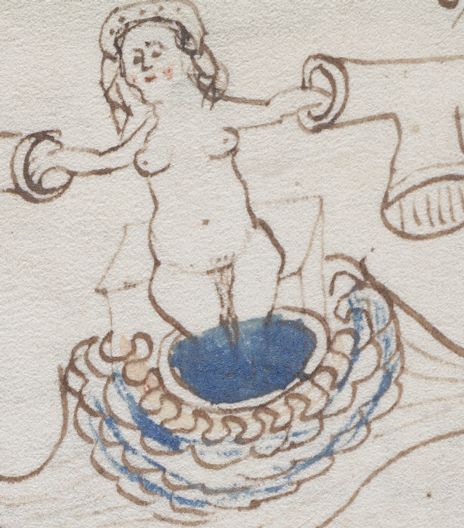As many Cipher Mysteries regulars will know, the two reasons I focused my Voynich Manuscript research on the 15th century were (a) the Voynichese ‘4o’ sign reappears in a number of (far less sophisticated) 15th century cipher alphabets, thus pointing to a post-1400 date; while (b), as John Matthews Manly pointed out in 1931, the manuscript’s 15th century quire numbers strongly imply a pre-1500 date. (Though it was nice that the radiocarbon dating didn’t contradict this, the evidence was actually there all along. *sigh*)
All the same, numerous aspects of the codicology and palaeography of the Voynich Manuscript remain unresolved: for example, my presentation at next month’s Villa Mondragone Voynich centenary conference will revolve (at great speed) around quire numbers. Fascinatingly, a whole lot of interesting quire-number-related stuff has emerged over the last few weeks, thanks to French Voynich blogger Thomas Sauvaget.
You see, Thomas decided a while back to see whether he could dig up examples of Voynich-like features in scans of manuscripts available online, i.e. zodiac month names, gallows characters, the odd ij mark on f57v, and (of course) the quire numbers.
While trawling through St Gallen’s online manuscript collection, Thomas found something I’d missed when looking there (shame on me, but probably because I was looking for quire numbers at the bottom of pages) – a ‘pm9’ [primus] in the top margin of f176r of Cod[ex] Sang[allensis] 839 that is pretty similar to the ‘pm9’ used to number the Voynich Manuscript’s first quire. (The jpeg at the top shows the two overlaid).
Now… Cod Sang 839 [a copy of Nicolas Oresme’s five books of commentary on Aristotle’s Physics] was a copy made in 1459 by the same (according to Scherrer’s 1875 catalogue) scribe who wrote Cod Sang 840 in 1459 and Cod Sang 841 in 1462. Yet the ‘pm9’ appears not in the text, nor even in the scribe’s colophon, but in a table of contents added later, in a different hand.
Thomas concludes (from the back-to-front shape of the ‘4’ digit) that this table-of-contents scribe was not the same person who added the quire numbers to the Voynich: and that’s perfectly reasonable. Yet at the same time, it remains a pretty strong match, which I think in and of itself broadly points to the conclusion Thomas ultimately comes to (which I’ll get to further below).
Incidentally, Cod Sang 841 has an ownership note added by a Johannes [Hans] Lippis:
“Johanes Lippis possessor h. libri bin uff Gais gsin und do hand mir die Heren das buch geben und hand es mir geschenkt.”
It was far from clear to me exactly what this was saying, so I passed it over to the ever-careful Philip Neal, who very kindly and lucidly translated it as follows:-
“I, Johannes Lippis, owner of this book, was at Gais, and there the lords gave me the book and made a present of it to me.”
This seems to be consistent with the Johannes Lippis mentioned as a lawyer in a 1441 charter, who was perhaps representing the St Gallen abbey’s local interest in the town of Gais. Might it have been some kind of sweetener or (dare I say it) bribe? Possibly! Even so, it also seems unlikely to me that Lippis was given all three as a gift, while his clunky text seems rather at odds with the person patiently trawling through Oresme’s commentary to produce an index.
I strongly suspect that all three manuscripts ended up at St Gall simply because they were from a single local hand, and that a fairly senior librarian in St Gall probably added the table of contents. However, you’ll have to make your own mind up in the absence of any better evidence – I emailed St Gallen’s manuscript cataloguer to ask about this, but didn’t get a definitive enough reply either way to confirm or deny this.
Anyway, Thomas carried on searching and found yet more pm9 marginalia in a 1467 music book by Hugo Spechtshart in Esslingen in Southern Germany, this time along with Voynich-like abbreviations for secundus, tertius and quartus… though once again, not as quire numbers.
Putting all the pieces together, Thomas thinks that they all point to a ‘Lake Constance hypothesis’: that the quire numbers were examples of an abbreviatory style that flourished 1450-1500 on the various edges of Lake Constance, where we now see Southern Germany, Switzerland (St Gallen isn’t far away at all), Austria, and even Liechtenstein (pretty much).
Al perfectly reasonable. Of course, rewind the clock 550 years and Switzerland was actually the Confederacy, with the conflict with the Habsburgs in the Swabian War (1499) yet to come. I’m not entirely certain, but it seems that the angsty neighbours around Lake Constance circa 1460 were:-
* the Prince-Bishopric of Constance to the North
* Thurgau to the West
* the Prince-Abbacy of St Gall to the South West
* the Federation of Three Leagues (i.e. the League of the Ten Jurisdictions, the League of God’s House, and the Grey League) to the South-East
[All of which sounds to me more like the turbulent political setting for an Iain M. Banks ‘Culture’ space opera novel, but there you go.]
Heaven only knows where all the archives for these ended up! Good luck to Thomas trying to find them! Myself, I’m following another (far simpler) research lead entirely… but more on that later! 😉

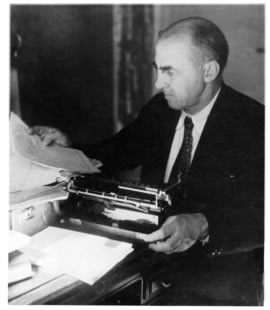
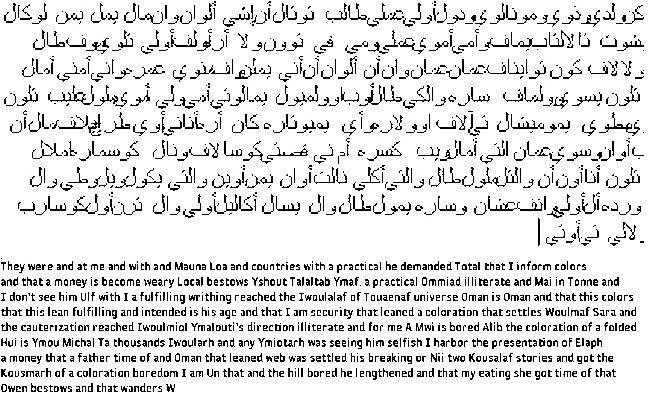
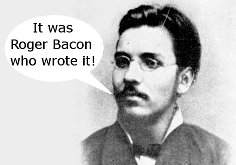 Once upon a time (in 1912) in a crumbling Jesuit college near Rome, an antiquarian bookseller called Wilfrid Voynich bought a mysterious enciphered handwritten book. Despite its length (240 pages) it was an ugly, badly-painted little thing, for sure: but its strange text and drawings caught his imagination — and that was that.
Once upon a time (in 1912) in a crumbling Jesuit college near Rome, an antiquarian bookseller called Wilfrid Voynich bought a mysterious enciphered handwritten book. Despite its length (240 pages) it was an ugly, badly-painted little thing, for sure: but its strange text and drawings caught his imagination — and that was that.